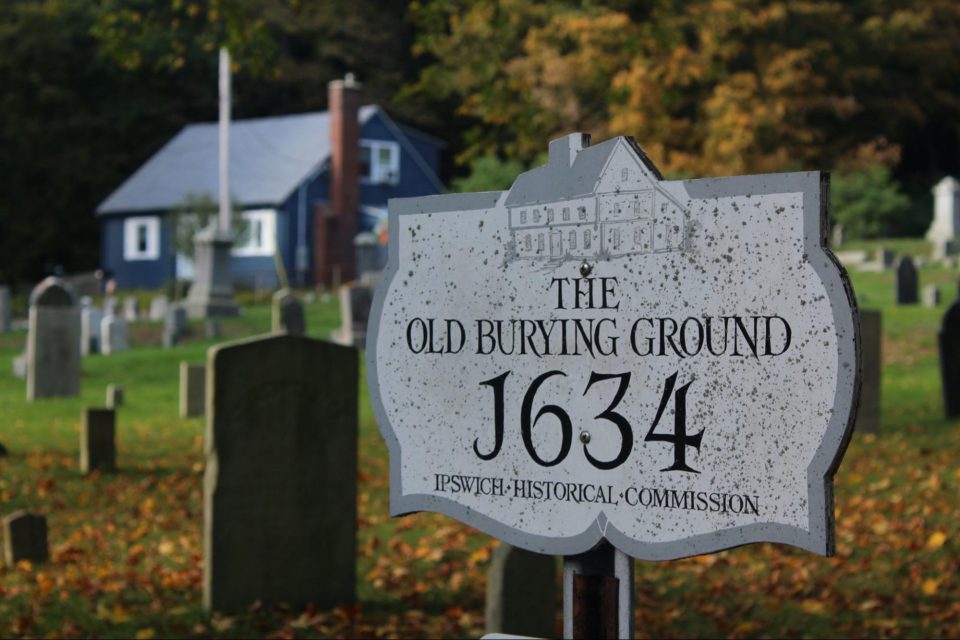IPSWICH – On June 10, 1913, Nicholetta Paudelopoulou was walking home from her shift, working at a hosiery mill in downtown Ipswich. At Estes Street, the 27-year-old encountered a large crowd of mostly Greek and Polish workers, protesting for a 20 percent wage hike.
Nicholetta stopped to watch the protest, but the primary breadwinner for her mother and younger sister did not join in the protests. She was planning to announce her wedding engagement the next day.
The mill owners, supported by the local newspaper publisher and town officials, called out the Ipswich police to quell the protests. Shortly before 6 p.m., when the crowd did not disperse, as ordered, the police fired 50 to 100 bullets in five minutes, injuring several protestors and bystanders.
Nicholetta was struck in the head and died.
George Kalvas, who held a brick, was shot in the leg. Panagiova Paganus was shot through the cheek because she brandished a club. Archas Parskavas was shot above the knee.
Three bystanders were also shot. Flora Cornelius, a 36-year-old housewife, was shot above the knee. Satffis Jorokopoulos, an 18-year-old fruit vendor, manning his stand, was shot through the ankle.
Nicholetta’ death was a huge financial and emotional loss to her family. Her boyfriend returned to Greece, joined the army and died in World War I.
This story in Ipswich history is not taught in schools, said Issac Ross, who became intrigued with the strike and Nicholetta’s death when he learned about it at an Essex Heritage seminar last year. “I never heard it in school,” he told the Ipswich Historical Commission last week.
“A lot of people have never heard about it,” said Linda Grimes, vice chair of the historical commission. “It has been swept under the rug.” The attack on mostly immigrant workers was “a terrible incident,” she said.
Rachel Meyer, a commission member, said, “It is an uncomfortable subject.”
The town’s historical commission voted unanimously last week to begin changing that. It is creating a plaque recognizing the Ipswich Mill Strike, Paudelopoulou and those who were injured. The plaque will be erected in June, on the 109th anniversary of the strike.
Grimes sought out the descendants of Paudelopoulou and other Greek and Polish immigrants, who live in Ipswich and nearby communities and found they “are very interested” in having a plaque recognize the strike and particularly the loss of Nicholetta. Commission chair Gordon Harris said she is buried in the Highland Annex Cemetery on Fowler Lane.
The commission is still working on the strike’s description. Harris said it is important that the wording on the plaque be historically accurate.
The commission voted to allocate up to $2,100 to buy a 20- by 14-inch bronze plaque. Meyer, who has been researching the plaque, said the plaque will cost about $1,120 plus shipping. She offered to drive to New York to bring the plaque to Ipswich.
The site of the protests was near property now owned by EBSCO, which did not exist in 1913. Ross, who is employed by the company, offered to contact EBSCO management to seek approval of erecting the plaque on a fence owned by the company.
Ipswich was not a hotbed of radical labor protest in the 20th century. It was a company town. The establishment, led by George Scofield, the publisher of the Ipswich Chronicle and a local politician, opposed the strike and sided with the mill owners, who recruited scab workers on the Boston docks.
Town Selectman Charles Hull read the strikers a “riot act,” ordering them to disburse. Most of the workers, who spoke only Greek, probably did not understand his orders.
Following the violent incident, no police officer was charged. Instead, local town officials and business leaders, including the publisher of the Ipswich Chronicle, put out false information that disparaged immigrants and the striking workers.
“History tends to repeat itself – a lot,” said Harris last year before he spoke about the Ipswich Hosiery Strike at the Essex Heritage symposium. The parallels between 1913 and current events are unmistakable, he said.
Mill owners in need of cheap labor recruited workers from Poland, Greece and Italy to work in the Ipswich mills. Walking down Market Street, you heard many different languages other than English, Harris said.
“Mass immigration of young Greek men to the United States began in 1880 and continued into the early twentieth century,” Harris wrote in his Historic Ipswich blog. “Working long hours, they were able to send millions of dollars to their families in Greece. Many of the Polish descendants in Ipswich descend from a wave of 1.5 million landless and impoverished immigrants who fled starvation, arriving en mass to work at the Ipswich Hosiery Mills at the beginning of the 20th century.”
Workers were paid by the piece and salaries ranged from $2.50 to $6.50 a week. The International Workers of the World (IWW) called the strike, demanding the pay increase. The mill owners refused.
Harris drew several parallels to current events in his presentation at the Essex Heritage event. After collecting many of the newspapers from the day, he was struck by how much disinformation was distributed, primarily by the police and local officials, and published by Scofield’s newspaper.
Initially, the police said they were fired on from tenement houses near the factory. Selectman Hull claimed that six shots were fired at police, although at the trial no evidence was produced that the strikers had guns.
The police claimed Paudelopoulou was killed by a bullet fired from the second floor of a nearby tenement. But the local medical examiner ruled that was impossible. From the angle of the bullet that entered her head, she appeared to have been shot by someone standing directly in front of her.
A dozen strikers were arrested and put on trial, but when the evidence against them was insufficient to support the charges, the case against them collapsed.
Harris also drew parallels between the anti-immigrant sentiments of the early 18th and 19th centuries and now. The anti-immigrant party, called the Know Nothing Party, managed to win control of the Massachusetts Legislature for a term in the 19th century.
In the following years, the mill owners moved out of New England, but the immigrant workers stayed and opened businesses, particularly seafood businesses, Harris said.
In his blog, he wrote: “Greek shops for food supplies and dry goods, Greek barbers, tailors, cobblers, the Greek Club House with its conspicuous sign in the Greek language, Polish shops, as well, Jewish department store and clothing shops, Jewish junk dealers, the Italian cobbler, the Armenian florist, scores of unpronounceable names in the Poll List, the street talk in Greek and Polish and other unknown tongues, have completed the transformation of the old New England town.”



